Living with PCD
Primary ciliary dyskinesia (PCD) is a progressive disorder, meaning it can worsen over time. Fortunately, for most people, the progression is slow.

While there is currently no cure and no treatments officially approved specifically for PCD, many therapies used in managing cystic fibrosis (CF)—another lung disease—are often applied to PCD care. Both conditions focus on preventing lung damage by treating infections early and aggressively.
However, it’s important to remember that PCD and CF are genetically distinct diseases. Treatments effective for CF may not always be ideal for PCD, and there is limited evidence supporting their use in this population. More research tailored to PCD is urgently needed.
Treatment
Until PCD-specific therapies are identified through research, treatment recommendations are based on expert consensus from clinicians with extensive experience in managing PCD.
We encourage patients and caregivers to review the current treatment guidelines provided by:
- The North American Genetic Disorders of Mucociliary Clearance Consortium (GDMCC)
- The European Respiratory Society PCD Task Force
As the PCD community grows and more patients participate in research and clinical registries, opportunities for clinical trials will increase—and so will access to new treatment options. If you’d like to be involved in research or clinical trials, contact us to learn more.
Managing PCD
The best outcomes occur when individuals with PCD are active partners in their care. In addition to routine medical treatment, lifestyle and self-care play a key role in long-term health.
Exercise
Regular physical activity benefits the body and mind—and it’s especially helpful for respiratory health. Even light or moderate exercise can make a difference. Everyone’s capacity is different, so the key is to move in a way that works for you, consistently.
Mental Health
Living with a chronic illness can be stressful. People with PCD—and their families—may experience anxiety, depression, or burnout related to the daily demands of disease management, missed work or school, relationship challenges, or fear about the future.
If you or a loved one is struggling emotionally, you are not alone—and help is available. Mental health support can improve both emotional well-being and physical health. Speaking to a mental health professional can be an important part of living well with PCD.
PCD at School
Supporting your child’s educational success starts with helping their teachers and school administrators understand PCD. Here’s a sample letter you can personalize and share with your child’s school team. It covers the basics of PCD and how it may affect attendance, classroom participation, and overall needs.
Read more about PCD at School.
PCD at Work
Many people with PCD enjoy rewarding careers and are able to work full time. However, the daily care routines and recurring respiratory infections can be demanding. For some, managing a full-time job may become difficult over time. In these cases, disability benefits may be worth exploring. Parents of children with PCD may also face challenges, including frequent time off from work for medical appointments or illness.
Social Security Insurance (SSI) and/or Social Security Disability (SSD) payments may be options for individuals who are experiencing difficulty with employment due to health-related disability—either their own or their child’s. SSI/SSD are federal programs that are administered at a regional level, so program eligibility can vary between regions.
The Americans with Disabilities Act (ADA) provides limited protection for Americans who need ‘reasonable accommodation’ in the workplace. In certain circumstances, PCD patients and parents successfully used the legal remedies available in the ADA to solve workplace problems.
The social work department of the hospital or clinical center where PCD care is provided is a good place to start for more information on these programs. Additionally, the Social Security Administration page provides detailed program information and referral services.

